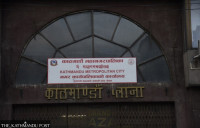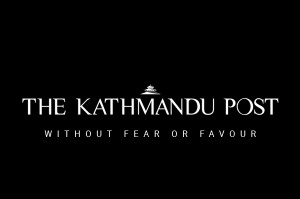Valley
Traffic police to use ‘SoToxa’ to check substance use by drivers
Police to examine oral fluid to detect the presence of six kinds of drugs including cocaine and cannabis.
Post Report
Five months after launching stringent checks against riders and drivers moving under the influence of banned substances, the Kathmandu Valley Traffic Police Office said it will now deploy sophisticated tools to check the intake of other kinds of drugs as well, on the road.
This time, the traffic police have received five ‘SoToxa' handheld analyzer kits that detect the presence of six kinds of drugs–cocaine, cannabis, methamphetamine, opiates, amphetamine and benzodiazepines—through a rapid examination of oral fluid.
“We will soon use it in the Valley. We are working to train our officials to use the device,” said Senior Superintendent of Police Rajendra Prasad Bhatta, who is also the spokesperson for the Valley Traffic Police Office.
The new devices were provided to the traffic police by the Ministry of Physical Infrastructure and Transport.
However, Bhatta said due to not having the technical manpower to handle the kits, the devices are not being used for now.
Although the Valley traffic police had announced the launch of their anti-drug initiative informally labelled as GaPaSe (Ganja Padartha Sevan or cannabis consumption) from September 25 last year, they started rigorous checks only from January.
In January, the Valley police started apprehending riders and drivers who were found to have consumed marijuana (ganja). The traffic police records show that 126 people have been booked with the help of THC rapid urine test (monoclonal antibody to selectively detect elevated levels of substance in urine).
Traffic police had started the new drive with the technical support from the Nepal Police Hospital and the Narcotics Control Bureau, Koteshwar.
“We are working to provide training to the staff on the field. As well, we are closely working with the narcotics bureau to make effective use of ‘SoToxa’ as it’s a new device,” said Bhatta.
After the massive success of anti-drunk driving initiative of traffic police in Kathmandu Valley since 2011, the police started regular checking to nab users of banned substances on the roads in Kathmandu, mainly at the entry points of Kathmandu such as Jagati in Bhaktapur, and at Thankot.
“Most of the riders or drivers booked by the police are those who take marijuana, and once we start using ‘SoToxa’, we don’t need to test the urine anymore,” said Bhatta.
Nepal criminalised the sale, cultivation and consumption of marijuana after the introduction of Cannabis and Narcotics Drug Control Act 1976. Based on the act anyone in possession of cannabis will land in prison and be slapped with a fine of up to Rs25,000.
Officials said the new kit ‘SoToxa’ will give test results within five minutes.
Traffic police say they started the GaPaSe and other drugs intake test among riders and drivers after they received complaints of police being lenient against those who drive under the influence of drugs.
“Our main focus is to reduce the road related accidents,” said Deputy Inspector General, Poshraj Pokharel, who is also the chief of the Valley Traffic Police. He further said a separate budget is needed to handle the new kits. “It’s quite costly to use it, so our office is seeking a budget from the government,” said Pokharel.
Unlike MaPaSe checks, to check GaPaSe, police and other volunteers in the field first talk to drivers by stopping their vehicles and examine their overall behaviour. If their behaviour is suspicious, police interview them by taking them to a separate place.
“If we feel our suspicions are aroused, we make them undergo a urine test with THC kits. Once SoToxa is used, just using a swab will be enough,” said Pokharel.
The Valley Traffic police data shows that since the anti-drunk drive campaign began in 2011, as many as 404,337 people had been booked until January for driving under influence.




 20.78°C Kathmandu
20.78°C Kathmandu










